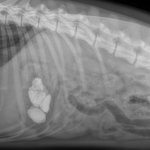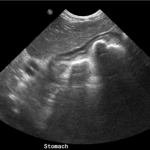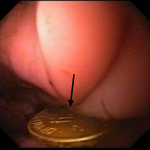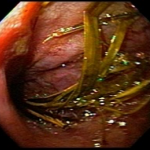What To Do When Your Pet Eats Something They Shouldn’t
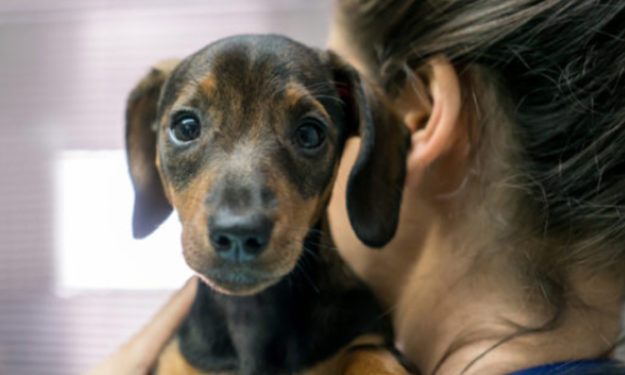
Written by Pedro Bento, DVM, DACVM, and Katie Sakakeeny, DVM, DACVECC
We’ve all been there. You walk in the room and your cat is chewing up the last bits of something stringy. Or your dog steals something off the floor and by the time you catch him and pry his mouth open it’s gone. Either at home or at the local park, our pets really enjoy checking things out and eating them if they get the chance.
It doesn’t matter if it’s appetizing or not, and I’m sure most times it isn’t. Sometimes pets think it’s great to “just” get a taste of whatever they can find! Any seasoned emergency veterinarian or internist will have endless stories of weird things dogs and cats have eaten and had to be removed: socks, underwear, acorns, rocks, hair ties, coins, bones, pine cones and much more.
It’s more common than you may think. Emergency clinics see pets that have eaten things they shouldn’t all the time. As a veterinarian, we need to find out what it was, how long ago it happened, and can it come out without doing damage. Foreign bodies should be taken seriously and must be acted on quickly.
Can’t You Just Make Them Vomit It Up?
The answer is sometimes – among other factors, it depends on what it is, if it has sharp edges, if it is caustic (corrosive) and just how many foreign bodies we’re dealing with. Another important question is if you witnessed the foreign body ingestion or if you just suspect it.
Imaging is Needed
To get more information on the possible foreign body, imaging is needed. Abdominal (belly) x-rays are usually the first step and in some cases the only necessary imaging needed. However, in other cases, a combination of x-rays and ultrasound imaging is needed to get information on how to adequately manage the case.
Ultimately, we’re trying to find out if a foreign body is present, what its location is within the animal, and what the chances of it passing without causing a problem are. These factors (and others) will determine if emesis (the act of vomiting) is an appropriate next step or if endoscopy and/or surgery are needed.
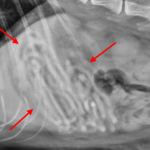
Hair ties in a cat’s stomach on x-ray.
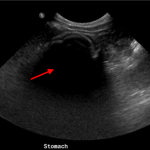
Hair ties in a cat’s stomach on ultrasound. Note the black shadowing caused by the hair ties.
Endoscopy vs. Surgery
As a rule of thumb, if the foreign material is past the stomach then endoscopy is not an option and surgery is needed if concerns for intestinal obstruction exist. Below is an x-ray image of a sock in a large breed dog’s small intestine which required surgery:
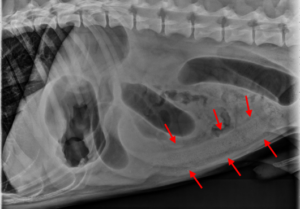
It’s also important to know that not all foreign bodies/material are amenable to endoscopic removal despite being in the stomach. It’s not common but it can happen that we’ll start with endoscopy (as it is less invasive) and end up needing to move to surgery if we see that removal is not possible. If foreign bodies get stuck in the pylorus (exit point from stomach into small intestine), surgery is needed because they can create an obstruction in the small intestine.
Check out these examples of gastric (stomach) foreign bodies and their imaging:
- Endoscopic view of multiple hair ties in a cat’s stomach which were removed via endoscopy.
- Endoscopic view of another cat with hair ties in stomach.
- Multiple rocks in a dog’s stomach on x-ray.
- Multiple rocks in a dog’s stomach on ultrasound.
- Endoscopic view of a coin in a dog’s stomach.
- Endoscopic view of multiple blades of grass in a dog’s stomach.
Prevention is Key
The goal is to always have patients seen as soon as possible after ingestion. This way, the chances of the foreign material still being in the stomach are higher. This can lead to less invasive ways of removal (if possible), meaning your furry friend can go home sooner and with less complications.
Additionally, any dog or cat with an intestinal obstruction can have life threatening complications. Unfortunately, if we are unaware that our pets ate something they shouldn’t have, clinical signs might not show up until their gastrointestinal tract is obstructed.
Prevention is the way to go!


